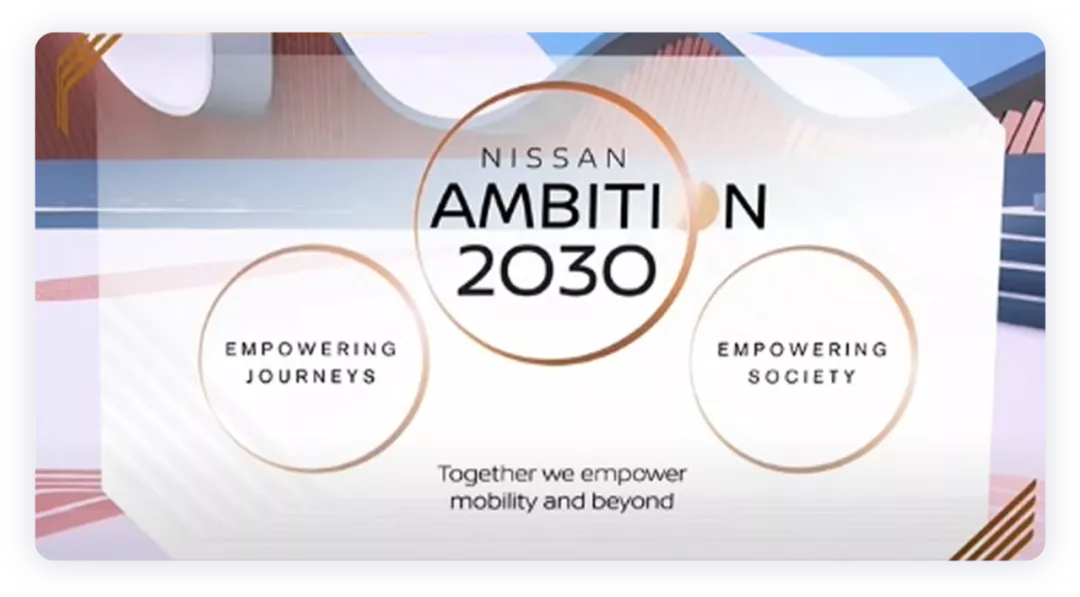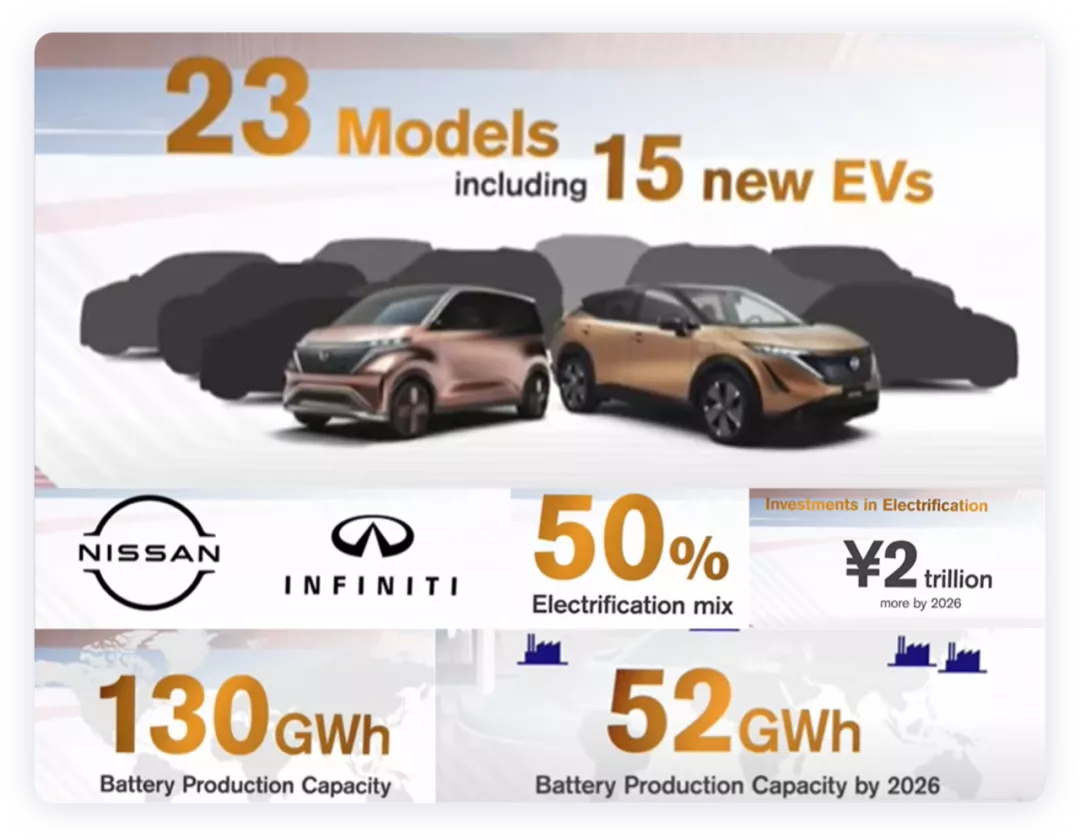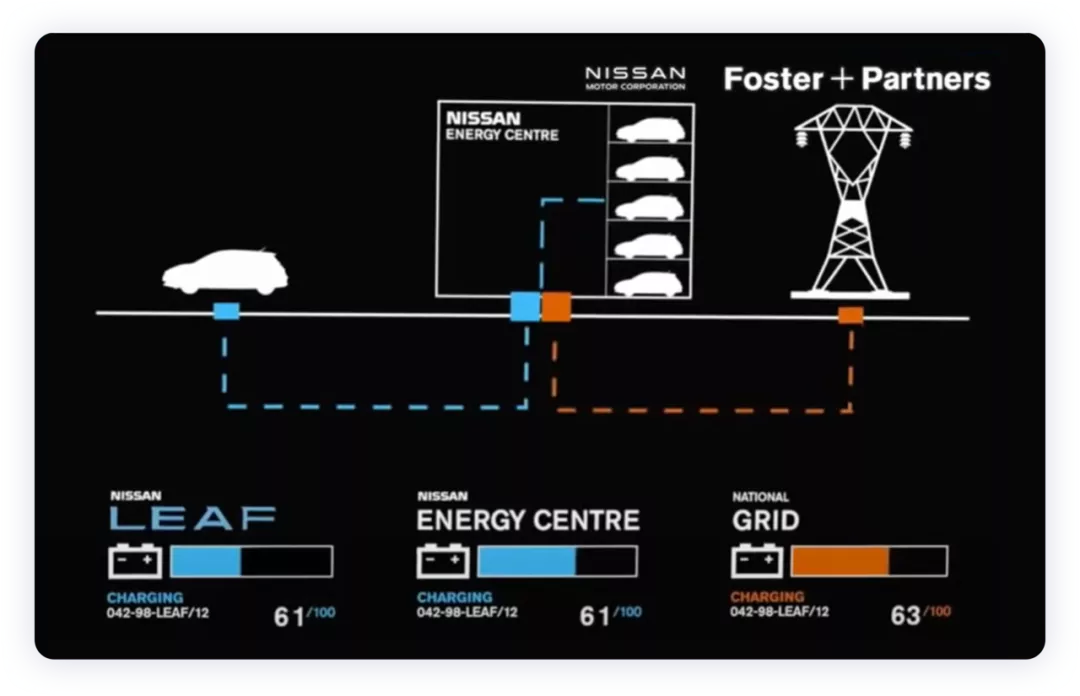The transformation route of Japanese electric cars gives us the feeling that they started early but became more conservative as they went along.
Nissan Motor Corporation recently released its “Nissan Ambition 2030” plan, which plans to invest 2 trillion Japanese yen (approximately RMB 112.84 billion) in the next 5 years to accelerate the deployment of electrified products and technological innovation.
There is a complete release on Youtube, and I want to extract some information to judge together whether it can really change the current situation.

Nissan Ambition 2030
Under this investment of 2 trillion Japanese yen, Nissan plans to launch 23 electrified models (including 15 pure electric models) by 2030, and the proportion of electrified models of Nissan and Infiniti brands will exceed 50%. For Nissan, the corresponding battery demand will be 130GWh.
Let’s break it down:
Nissan’s current global volume is around 4 to 5 million. If the penetration rate in 2030 is half, it will be around 2 to 2.5 million. If it is based on 130GWh, the vehicle’s charging capacity will be about 52kWh to 65kWh.
Looking at the market separately, by the end of the 2026 fiscal year, the sales of electrified models in major core markets including:
Europe (500,000 units): sales of electrified models accounted for over 75% of total sales;
Japan (500,000 units): sales of electrified models accounted for over 55% of total sales;
China (1.5 million units): sales of electrified models accounted for over 40% of total sales;
United States (1 million units): by the end of the 2030 fiscal year, sales of pure electric models accounted for 40% of total sales.

From this vision, Nissan is also advancing the timeline for solid-state batteries- planning to launch electric vehicles equipped with unique solid-state batteries in the 2028 fiscal year.# Nissan’s Technology Plan for Electrification and Automation
In the 2024 fiscal year, Nissan will build a pilot factory in Yokohama, Japan. In 2026, there will be a large-scale investment in solid-state batteries in-house, which can shorten the charging time to one-third of the original time. By the 2028 fiscal year, the Pack cost for all-solid-state batteries can be reduced to $75 per kilowatt-hour, and Nissan’s ultimate goal is to reduce the cost to $65 per kilowatt-hour, achieving cost parity between electric and gasoline vehicles.
Nissan hopes to expand the application of solid-state batteries to more models while improving energy density and charging time. In terms of battery supply, Nissan will establish a global battery supply system and, together with its partners, is expected to increase its global battery capacity to 52 gigawatt-hours (GWh) by the 2026 fiscal year and 130 GWh by the 2030 fiscal year.
In addition, Nissan will further integrate e-POWER technology by packaging hybrid batteries, inverters, reducers, and motors into one system.
Nissan’s technology plan also includes driver assistance and intelligent technology. By the 2026 fiscal year, Nissan’s ProPILOT technology will be expanded to more than 2.5 million Nissan and Infiniti vehicles. Meanwhile, Nissan will further develop its autonomous driving technology with the goal of adopting next-generation LIDAR systems in all new models by the 2030 fiscal year.
The EV36Zero project is an integrated manufacturing and service ecosystem that connects mobile and energy management to achieve carbon neutrality.“`markdown

Summary:
After carefully reviewing this press conference, it seems that the Japanese automakers are relatively slow in terms of vehicle development. Overall, their development speed still cannot keep up with Tesla’s pace. Missing the two-year time frame between 2022-2023, it will be more difficult to catch up even if they work harder later on.
“`
This article is a translation by ChatGPT of a Chinese report from 42HOW. If you have any questions about it, please email bd@42how.com.